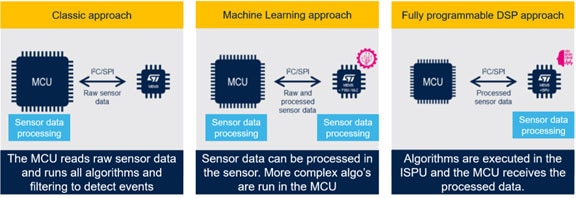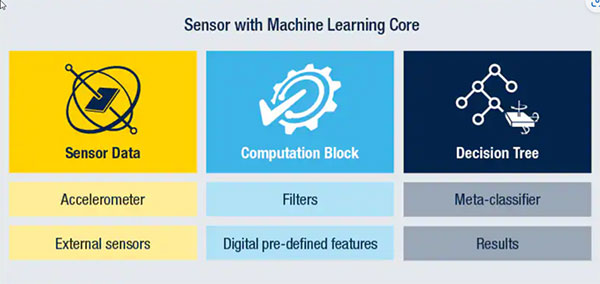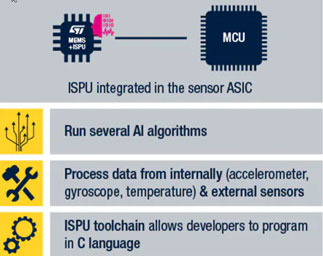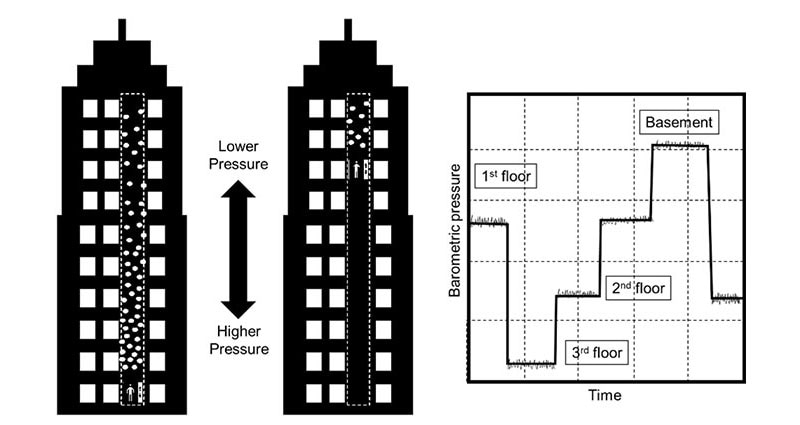Ecosystem for Sensing in the Edge
This blog will introduce and compare several approaches to sensing system architectures designed for IoT and edge computing. Each approach has pros and cons in terms of complexity and system power consumption.
MEMS as smart systems
There are three mainstream approaches to creating a smart sensor system in the edge, described in Figure 1. The ‘classic approach’ is very flexible, with full algorithms running in the host MCU.
The integration of machine learning and digital signal processing in sensors represents a key step forward towards “true edge” computing. This convergence, especially within MEMS devices (Micro Electro-Mechanical Systems), enables edge systems with the ability to not just capture data but also to interpret and act upon data in real-time. Embedded intelligence in sensors improves the efficiency of data processing, enabling faster and more contextually relevant responses at the edge.
 Figure 1: Mainstream sensor systems architectures. (Image source: STMicroelectronics)
Figure 1: Mainstream sensor systems architectures. (Image source: STMicroelectronics)
Classic approach
In a classic computing architecture, the microcontroller (MCU) is the hub for processing sensor data and contains the sensor processing algorithms. This approach is very flexible in terms of firmware portability and is the most scalable architecture for processing complex algorithms. However, this architecture requires that sensor data be transmitted from the sensor to the MCU, often at high data rates. The MCU must also filter the raw data to find what it needs for an algorithm to function and may discard many of the samples, which were transmitted. This results in less efficiency and typically higher system power consumption which can be very important in IoT computing. In addition, the selection of MCU must be sized appropriately with a flash size and memory so it can execute all the algorithms, which adds to the cost and complexity of the system.
Machine Learning Core (MLC)
A second approach to IoT edge processing is the Machine Learning Core shown in Figure 2. The MLC is an engine embedded in the sensor, which can be trained to recognize specific events through supervised learning. The MLC consists of a computation block, filtering, and a decision tree based on meta-classifications.
The MLC sensor can detect movements and ultimately communicate ‘events’ to the MCU rather than the raw data, achieving a better system energy efficiency. In MLC capable sensors the algorithm data is mainly contained in the sensor itself. The MLC is less scalable than a classic computing architecture because it operates specifically on the sensor data. But the MLC can be very useful for the development of difficult to program events, such as gestures and vibration levels.
 Figure 2: Sensor with integrated Machine Learning Core. (Image source: STMicroelectronics)
Figure 2: Sensor with integrated Machine Learning Core. (Image source: STMicroelectronics)
Intelligent Sensor Processing Unit (ISPU)
The ISPU is a sensor with an integrated digital signal processor (DSP) which is designed to work with sensor data locally, in the chip. The ISPU is more portable than the embedded machine learning approach because it can execute standard C code for more complex sensor algorithms. However, the DSP in the ISPU is a dedicated core intended for sensor-related operations and has more constraints in terms of code and data constructs than the classic approach.
Similar to the MLC, the ISPU optimizes the required computing power because it operates on the sensor data in real-time, with no need to transfer the data upstream to the MCU for processing. In contrast to the MLC approach, the ISPU also offers higher processing capability in the AI-enabled programmable core (ML and NN). Since the ISPU operates with C language, it is compatible with many commercial and open-source AI models.
 Figure 3: Intelligent Sensor Processing Unit Features. (Image source: STMicroelectronics)
Figure 3: Intelligent Sensor Processing Unit Features. (Image source: STMicroelectronics)
In order to succeed in leveraging AI in sensor-related applications, new tools, and software examples must also be utilized to quickly adapt a smart sensor architecture. One such tool, which is compatible with all three above approaches, is Nano Edge™ AI Studio (NEAi). This is a free PC-based development studio for developers. NEAi requires no advanced data science skills and software developers can create optimal tinyML® libraries from the user-friendly environment. NEAi can generate four types of libraries: anomaly detection, outlier detection, classification, and regression libraries. For more information about how to use the ISPU for anomaly detection applications using the NEAi software tool, see reference #4 below.
Conclusion
There are several choices for computing architecture for sensors in the edge computing applications. Executing decisions on data “at the source” is more sustainable, reducing time and energy by acting on data in real-time. By leveraging embedded machine learning and artificial intelligence capabilities in MEMS sensors and tool chains, new IoT edge computing systems will enable applications such as truly sustainable smart cities, improved manufacturing throughput, and low-powered wearable sensors in healthcare and beyond.
References
- MEMS Sensors Ecosystem for Machine Learning:
- How to use MEM sensors with an intelligent processing unit for anomaly detection:
- Sensor Fusion Low Power in MEMS Inertial Measurement Unit:
- How to use MEMS sensors with an intelligent processing unit for anomaly detection applications using NEAI software tool

Have questions or comments? Continue the conversation on TechForum, DigiKey's online community and technical resource.
Visit TechForum










